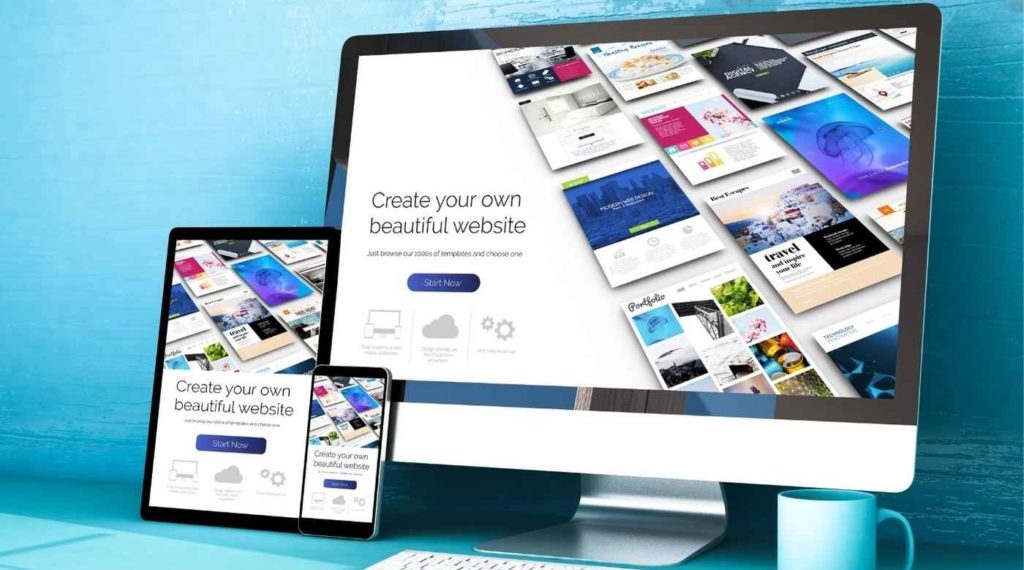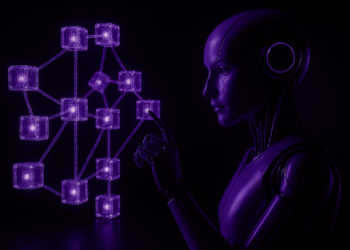Headless technology marks a major breakthrough in the content management. Let’s take a look at an ongoing revolution with our partner Contentful in this 2nd article about CMS. To trace the history of Content Management Systems up to now, have a look at our first article!
The monolithic approaches to content management that were widely adopted in the past soon found their limits once the 2010s hit their stride. Difficulty in getting to grips with the tools, complicated integration, multi-channel management, security problems, etc. These are just some of the difficulties that companies have had to face.
And within companies, these difficulties have taken their toll on relations between different departments. The source of the problem? The emerging opposition between business organisations, on the one hand, and the IT department on the other. ‘In-house solutions,’ explains Olivier Berckmans, ‘have contributed to giving full power to the IT department which, in the long term, could prove a brake on growth.’ Indeed, Contentful’s Regional Partner Manager continues, ‘business teams, and in particular marketing teams, have had needs to be met but have sometimes had to wait months and months to get the green light from the IT department for a particular project.’ These tensions have led to a bad atmosphere but, above all, to new habits.
So what’s at the source of this disenchantment with old CMS? The recurring tensions between business organisations and IT departments.
‘To get around the IT obstacle, business units have turned to outsourced SaaS offerings.’ The benefits? To be able to get to work immediately and to break free from the control held until now by the company’s IT department. But, on the other hand, ‘this began to pose various security or confidentiality problems, which represented financial and strategic risks for companies’. In the longer term and as needs increased, these solutions also proved to be very expensive and therefore not as attractive to teams.
The fact remains that the deployment of SaaS has ushered in winds of change. Since then, these solutions have developed and moved towards more reliability, efficiency, security and ROI. IT departments, meanwhile, have jumped on the bandwagon to embrace SaaS and move to the cloud. This leads Olivier to believe that ‘the SaaS story is one of the key components that have enabled the shift to a new world of content management.’
So it’s up to us to explore this world of the future with those who have already been living in it for a long time: the digital experience creation experts from our partner Contentful.
1. The headless CMS revolution
SaaS provides a concrete response to the diversification of profiles involved in the management, creation and distribution of content. This agility and ease of adoption is at the heart of the CMS revolution. ‘At Contentful,’ explains Olivier, ‘we’ve given this a name: the “builder ethos”’. This philosophy recognises that a great digital experience starts with the people who build it. ‘It creates a culture that gives people the space, tools and time to tinker, experiment and create new digital experiences.’
Go on and adopt the ‘builder ethos’: ‘a culture that gives people the space, tools and time to tinker, experiment and create new digital experiences’.
The result? A solution with multiple advantages because it is adapted to each user’s individual experience, as Danone can testify. By adopting Contentful, the food giant has revolutionised the way it builds a website as a global team. ‘Compared to other CMSs we have used,’ confirms Delphine Desfeux, Digital and Media Manager at the multinational firm, ‘the adoption of Contentful by the local teams has been really successful.’ From developers to contributors to those responsible for web applications, everyone can ‘use Contentful independently’, including ‘people who aren’t quite as digitally literate’. From now on, therefore, it is the CMS solutions that will adapt to the users and not the other way round. How so? By inviting clients to develop a playbook that provides customised guidelines for each of them. ‘We can do this,’ says Olivier, ‘thanks to the support offered by partners such as Wemanity.’
This CMS revolution is also a technological breakthrough. Headless content management systems dissociate data management (the backend) from its display on the interface for the end user. This decoupling allows headless CMSs to respond directly to API calls. This means that content is raw, it can be published anywhere and can be distributed to a large number of channels.
2. A win-win solution
The benefits? Increased flexibility, and more! As the backend is decoupled from the frontend, there are no wait times for retrieving content. The API provides dynamic data that can be integrated into the page structure at any time, without the need to refresh it.
Such dynamism comes in handy when the health and economic context requires you to react quickly and change your content frequently, as SAS can attest to. Halfway through a digital transformation that began in 2019, the airline faced the biggest crisis in airline history in 2020 alongside major communication needs. However, as Maria Alfredéen, Head of Digital Development at the Scandinavian company, observes, the headless technology has made it possible to adapt their interface’s ‘faces’ to the changing situation. Indeed, ‘the digital team [had to and could] accelerate its deployment rate from one change per month to 100 changes per month.’
5 features of an integrated platform
- Speed
- Flexibility
- Adaptability
- Scalability
- Reliability
This performance in terms of scalability is easily explained when we understand the fact that developers can work on the backend without disturbing the display of the frontend or, conversely, build pages from the frontend without impacting the backend. And all this without them having to give up their favourite programming language! And what about top management? It is sure to appreciate the security guarantees offered by the new content management systems. As the content publishing environment is not accessible from the database, its use protects against malware attacks or the worry of permanent updates.
3. The best of all worlds
The abandonment of the monolithic approach, notes Olivier, ‘has above all encouraged the return to favour of the “best of breed”, in other words, modular architecture.’ The challenge? Hans Nilsson, E-commerce and Digital Platform Manager at Swarovski Optik, sums it up perfectly: ‘it’s about having the easiest possible way to integrate third-party software’. The role of the consultants is therefore to suggest to the client the functionalities, the e-commerce solutions, the catalogue management or the languages that will enable them, at the end of the day, to have a tailor-made and truly impressive platform. ‘With Contentful,’ says Jeff Serota, Senior Director of Product Management at online retailer Staples Canada, ‘we’ve gone from needing a day or two to launch a new product to being able to launch it right after one of our partners tells us about it.’
Time to market accelerated: ‘With Contentful, we’ve gone from needing a day or two to launch a new product to being able to launch it right after one of our partners tells us about it.’ (J. Serota, Staples Canada)
This hyper-customisation made possible by the APIs of headless CMSs also has further positive impact on business. Let us win you over with two other examples:
- By moving from a monolithic architecture to a stack of microservices, Bang & Olufsen has seen its conversion rate increase by 60% and its average basket by 13%.
- And Alpro’s marketing teams can now easily monitor and publish content themselves, without having to rely on an external agency or their developer colleagues.
This is partly due to the efficiency and effectiveness of the training provided to content managers, which now only requires a single half-day. However, admits Ralph Urmel, International Digital Experience Manager at the Danish company, if ‘multi-market campaigns are easy to launch’, this is also and above all ‘thanks to the way Contentful manages translations and localisations’, thanks to its modular structure and its management APIs.
The new mantra: Headless CMSs go hand-in-hand with agility These examples, like the previous ones, show how headless CMSs go hand-in hand with agility. Above all, they underline how adopting them gives new life to the idea of collaboration. Collaboration between user teams, collaboration between client companies and those offering these solutions, and collaboration between different partners within the same ecosystem: could the advent of the new CMSs mark, finally, a true revolution in collaboration?












